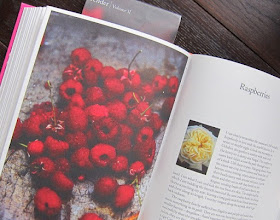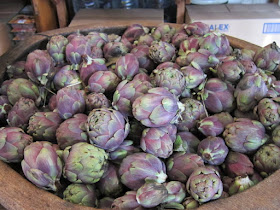 |
| My Bakewell Pudding |
At the end of my previous posting A warm bowl of raspberries on the longest day I promised to give you a recipe suggestion for using up that jar of last summer's raspberry jam. I planned to write a well researched piece on the classic English dish Bakewell Pudding before offering my own version. Well, time is against me as I pack for a trip to Lisbon but a promise is a promise. Some of you will know, the original recipe is much disputed. Even the name - is it a 'tart' or is it a 'pudding'? The thoughtful piece of writing will have to wait for another day. Here is my recipe and it tastes good. What more could you want?
My Bakewell Pudding
PASTRY (makes 2 x 20cm x 3.5cm deep tart cases
– you’ll need one for this recipe):
250g (10oz)
plain flour25g (1oz) ground almonds
Pinch of salt
150g(6oz) cold butter
75g (3oz) icing sugar
Grated rind of half a lemon
1 egg yolk
3 tablespoons milk
FILLING:
150g room
temperature unsalted butter 150g caster sugar
2 medium eggs
150g ground almonds (if you grind your own, leave some of the skins on)
150g raspberry jam (or a little more if it's good)
25g flaked almonds
Sift the flour
into a mixing bowl and add the ground almonds and salt. Add the butter and rub
in with fingertips. Sift in icing sugar and add grated lemon rind and mix.
Lightly beat the egg yolk and milk together and stir it into the dry
ingredients. Mix just until the dough just comes together then turn out and
knead gently to smooth the surface. Wrap
half of the pastry and rest in fridge for just 30 minutes (wrap and freeze the
other half for another time).
Pre-heat the
oven to 200C (180C fan oven) Lightly butter a 20cm x 3.5cm deep loose-bottomed
tart tin. Roll out the pastry thinly and
line the tin, smoothing off the top and pricking the base. Rest in the fridge
for a further 15-30 minutes. Line with
greasproof paper and dried beans and bake the tart blind for 10 minutes. Remove the lining and beans and return the
tart to the oven for a further 4-5 minutes to make sure the base is
cooked. Remove from the oven and put to
one side.
Turn the oven
temperature down to 180C (160C fan oven).
Mix the butter then add the caster sugar and mix well. Mix the eggs together and add gradually to
the mixture beating well. Gently fold in
the ground almonds. Spread the raspberry
jam over the base of the tart. Gently
spread the almond cream right to the edges of the tart and top with the flaked
almonds. Bake in the centre of the oven
for 35 minutes (check after 30 minutes ad if it’s browning too much, place a
piece of foil over the pudding).









